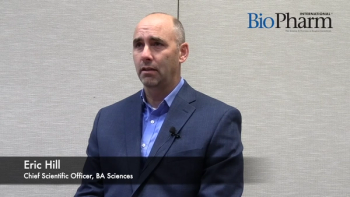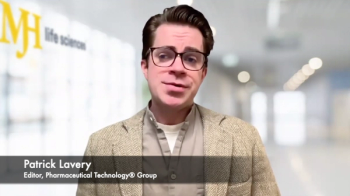
- BioPharm International-12-01-2005
- Volume 18
- Issue 12
Small-scale Biomanufacturing Benefits from Disposable Bioreactors
The cell density achieved in a CELLine bioreactor is typically 1 to 2 orders of magnitude higher than in a conventional culture vessel
The use of disposable cell culture systems for the manufacturing of biological products in mammalian cells is advantageous because it facilitates minimization of necessary validation efforts, as well as circumvention of up-front sterilization and subsequent cleaning steps. For research-scale applications, culture systems typically used are tissue culture flasks, roller bottles, or spinner bottles, and 1 to 50 mg of proteins in total volumes up to 2 L are produced (Table 1). In biopharmaceutical development or for manufacturing of antibody-based diagnostics, a scale-up of production to reach protein yields of 50 to 1,000 mg is often necessary. To meet these increased protein yields, two alternative routes might be considered. Either increase the culture volume, or switch to a technology that yields product in a more concentrated form.
Fabrizio Baumann
For volume scale-up, increasing the number of cell-culture disposables is cumbersome because handling-time and space requirements increase accordingly, inevitably resulting in higher manufacturing costs. A more economic solution is provided by bag-based disposable systems, available in working volumes of up to 500 L, providing an alternative to stainless steel bioreactors. However, working with bag-based bioreactors requires capital investment in specific equipment and trained personnel.
Another possibility is to use disposable two-compartment bioreactors that allow production of recombinant proteins in a highly concentrated form. The two-compartment technology has been widely adopted in recent years as it does not require any additional investment in specific equipment and can be easily handled by staff experienced with standard cell-culture systems.
The first part of this article describes two-compartment cell cultivation, for readers unfamiliar with it. Part two presents a cost analysis for production of monoclonal antibodies (MAbs) using two-compartment technology that many laboratories have successfully employed for production of MAbs in the milligram-to-gram range. The production costs associated with the most widely used two-compartment system are compared to the costs of conventional production with roller bottles or with a stirred bioreactor. The data presented are based on results obtained from in-house experiments at INTEGRA Biosciences AG, from customer surveys, and supported by figures from published literature.
TWO-COMPARTMENT CELL CULTIVATION
In its simplest form, two-compartment cultivation occurs when cells grow inside dialysis tubing placed in a culture bottle filled with medium. Because of the semi-permeable properties of the tubing, small nutrient molecules such as glucose or glutamine can freely diffuse to the cells, while toxic catabolites are continuously removed from the cells by diffusion in the opposite direction. Trapped inside the tubing, the cells are optimally supported and can grow to high densities.
The first commercially available two-compartment systems were hollow fiber bioreactors (HFBs), based on a bundle of hollow fibers embedded in a disposable plastic cartridge. The culture medium is continuously perfused through the hollow fibers while the cells reside in the space surrounding the fibers. The walls of the hollow fibers are semi-permeable like a dialysis membrane so nutrients and metabolic waste products can freely diffuse to and from the cells. HFBs require specific equipment, consisting of a pump to maintain medium flow and provide gas exchange. An overview of HFBs was given by Jackson, Trudel, and Lipman in 1999, but several systems they described have disappeared from the market as they proved too expensive and too cumbersome to use.1 This was especially true for a production scale smaller than one gram, whereas HFBs are still used for a higher scale (Table 1).
Small-scale HFBs have been displaced by membrane-based two-compartment systems, which have proven to be more cost effective and simpler to use. Currently, two systems are available: the two-compartment roller bottle miniPERM (designed by the German-based In Vitro Systems & Services GmbH) and the static flask CELLine (INTEGRA Biosciences AG, Switzerland).1-4 As shown in Figure 1, the core element of the CELLine system is the cell compartment, which is formed by two different membranes incorporated into the bottom of the cell-culture flask. The upper membrane separates the cell compartment from the medium compartment and is made of a semi-permeable cellulose acetate sheet for exchange of metabolites between the two compartments. The lower membrane is made of gas-permeable silicone and guarantees efficient oxygen and CO2 transfer between the cell compartment and the incubator. Because the cell compartment is only 2 to 3 mm thick, efficient oxygenation is achieved by simple diffusion, hence avoiding the need for agitation and the resulting detrimental shear stress.
Table 1. Comparison of Different Disposable Cell Culture Systems for MAb Production (Modified after McArdle4)
As illustrated in Figure 1, cells and the secreted expressed proteins accumulate in the cell compartment, located at the bottom of the flask, separated from the medium compartment by a dialysis membrane, indicated by a line of dashes (---) in the diagram. Nutrients smaller than 10 kDa freely diffuse through this dialysis membrane, thereby sustaining cell growth. Similarly, but in the opposite direction, toxic catabolites cross the dialysis membrane and are removed from the cells' surroundings. Efficient gas exchange takes place through the gas-permeable silicone bottom of the cell compartment membrane, indicated by a line of dots (···) in the diagram.
COST ANALYSIS FOR 200 mg MAb PRODUCTION
Due to the high reaction specificity of MAbs, the production scale necessary for research and development applications, for in vitro diagnostics, or for quality control purposes does usually not exceed 1,000 mg. In the comparative analysis presented here and summarized in Table 2, we consider the costs arising during production of 200 mg MAbs using either a CELLine 1000 or conventional non-compartmentalized systems (roller bottles and a stirred bioreactor). Different production parameters need to be defined according to the required yield and to the culture system used (listed in the upper section of Table 2). The production process depends on productivity of the hybridoma clone used, i.e., on the amount of MAb produced per mL culture supernatant. In conventional cultivation systems, the maximal hybridoma density achieved is approximately 106 cells/mL, and typical productivity values found in the literature are 0.01 to 0.05 mg/mL.1-4 It must be noted that productivity can be considerably inferior when using a "low secretor" clone, as is often the case when productivity is not considered during clone selection. The other parameter influencing the production process is the volume of produced supernatant. Concerning the roller bottle and the stirred bioreactor, a supernatant volume of 300 mL and 5,000 mL per culture vessel has been defined, respectively. When assuming a productivity of 0.04 mg/mL and a batch culture protocol (i.e., one harvest per cultivation vessel), the volume of supernatant required to yield 200 mg MAb amounts to 5 L, which requires the use of 17 roller bottles or one bioreactor run.
Figure 1. Schematic Representation of the Two-Compartment Set-up in a CELLine 1000 Bioreactor
The cell density achieved in a CELLine bioreactor is typically 1 to 2 orders of magnitude higher than in a conventional culture vessel, due to the optimized culture conditions described earlier. Consequently the product concentration also increases by a factor in the range of 10 to 100. In the case of hybridomas, densities of 107 to 108 cells/mL and MAb concentrations between 1 and 2 mg/mL are achieved.1-4 The volume of supernatant produced with CELLine corresponds to the cell compartment volume (20 mL) where the secreted MAb remains trapped.
Another important parameter to consider is the duration of cultivation determining the number of times supernatant can be harvested. Cells are cultivated for an extended time period in CELLine (10 weeks or more), and the supernatant is harvested weekly. When a productivity of 1.5 mg/mL is assumed and 20 mL of supernatant are harvested weekly from the cell compartment of one CELLine, seven harvests are necessary to produce 200 mg of MAb. Because 1.0 L of medium is exchanged weekly in its compartment, the total medium consumption is 7.0 L for this compartment, plus 140 mL for the cell compartment.
Production costs listed in the second section of Table 2 were calculated according to these parameters and are subdivided into expenses for disposables, equipment amortization, medium, serum, and labor. With regards to disposable costs, a bioreactor is relatively expensive. However, similarly high are the expenses estimated for the purchase of 17 roller bottles. Concerning equipment costs, standard cell culture laboratory equipment (such as incubator and microscope) has not been considered because this equipment is required regardless which culture system used. When using CELLine, no additional equipment is needed, whereas amortization costs accrue for the roller apparatus and the stirred bioreactor. To calculate costs, a depreciation period of five years and an average number of 30 production runs per year have been assumed, so with an initial investment of €3,000 (approximately $3,700) for the roller apparatus and €20,000 (approximately $24,668) for the stirred bioreactor, amortization costs per run are €20 and €133.3 (approximately $25 and $164), respectively.
Regarding medium costs, the use of CELLine involves consumption and consequently costs that are approximately 40 percent higher than conventional systems. Significantly less serum is necessary because most growth-stimulating components in serum are too large to diffuse through the semi-permeable membrane and it is common practice to supplement only the cell compartment with serum and to reduce or completely omit serum supplementation of the medium compartment.2 A one percent serum supplementation of the medium in the medium compartment (70 mL serum) has been assumed, because this is often done to reduce osmotic pressure generated by unequal supplementation of the two compartments. Assuming a 10 percent serum supplementation of the medium in the cell compartment, an additional 14 mL of serum is necessary for CELLine, resulting in a total consumption of 84 mL serum. This represents a six-fold reduction of serum consumption (and costs) when compared to the 500 mL serum needed for non-compartmentalized systems.
Table 2. Cost Analysis in Euros for Production of 200 mg of MAb Using CELLine or Conventional One-Compartment Systems
To calculate labor costs, a wage of €40/hr (approximately $49.33/hr) has been assumed, and the handling time for inoculation and supernatant harvesting has been estimated based on the feedback of different users. The time necessary for handling CELLine amounts to 20 min per bioreactor and harvest, the handling of one roller bottle requires 15 min, and the use of the stirred bioreactor, including cleaning and sterilization, is estimated to require a total of eight hr. Despite the fact that the handling time for one roller bottle is 25 percent lower than for one CELLine, the larger number of bottles requires a total handling time of 265 min, or nearly twice as much as for seven CELLine harvests (140 min).
Further cost savings are possible during downstream processing of the product. Owing to the high concentration of the produced MAb, concentrating it prior to purification is not necessary. Depending on the application of the MAb, purification might be omitted as well, because the MAb purity, i.e., the ratio of MAb to contaminants, is much higher than the purity of MAbs produced with conventional systems.
According to the analysis presented here, total production costs are lowest when CELLine is used (€1.5/mg MAb, or approximately $1.85/mg MAb), and they increase by 60 percent when using roller bottles (€2.4/mg MAb, or approximately $2.96/mg MAb), primarily resulting from higher expenses for serum and labor. The production with a stirred bioreactor further augments the costs, due to additional labor and to equipment amortization. It should be noted, however, that costs depend on the amount of MAb produced: for small amounts (less than 50 mg) the difference between roller bottles and CELLine is small and economic considerations are less relevant. For larger amounts (greater than 1 g), the use of a stirred bioreactor becomes competitive and represents an alternative to CELLine.
CONCLUSION
The CELLine bioreactor combines the advantages of high cell densities achieved in two-compartment systems with the ease of use typical of a standard tissue culture flask, resulting in economically efficient biomanufacturing on a small to medium scale. The presented benefits of MAb production with CELLine also apply to the manufacturing of other biological products such as recombinant proteins and viral vectors, so that any laboratory with basic cell culture expertise can produce highly concentrated, high-quality proteins for research or diagnostic purposes in a cost-efficient way.5-7
Fabrizio Baumann is product manager for cell cultivation at INTEGRA Biosciences AG, Schonbühlstr. 8, CH - 7000 Chur, Switzerland, phone: +41 (0)81.286.95.30, Fax: +41(0)81.286.95.33,
REFERENCES
1. Jackson LR, Trudel LJ, Lipman NS. Small scale monoclonal antibody production in vitro: methods and resources. Lab Animal. 1999; 28(3):38-50.
2. Trebak M, Chong JM, Herlyn D, Speicher DW. Efficient laboratory-scale production of monoclonal antibodies using membrane-based high-density cell culture technology. J ImmunolMethods. 1999; 230(1-2):59-70.
3. Bruce MP, Boyd V, Duch C, White JR. Dialysis-based bioreactor systems for the production of monoclonal antibodies — alternatives to ascites production in mice. J Immunol Methods. 2002; 264(1-2):59-68.
4. McArdle J. Report of the workshop on monoclonal antibodies). ATLA. 2004; 32 (suppl 1):119-122.
5. Mittermaier J, Zang-Gandor MO. Long-term high level protein expression in adherent, protein-free growing BHK cells using INTEGRA CELLine adhere 1000 bio-reactor flasks. Genetic EngineeringNews. 2004; 24(12):42.
6. Docagne F, Colloc'h N, Bougueret V, et al. A soluble transforming growth factor-beta (TGF-beta) type I receptor mimics TGF-beta responses. J Biol Chem. 2001; 276(49):46243-46250.
7. Matsumoto I, Studer A. Continuous recombinant protein production in baculovirus infected SF9 cells using CELLine classic 1000 two-compartment bioreactors. 2004. Available at:
Articles in this issue
almost 20 years ago
Rapid Microbiological Methods and the PAT Initiativealmost 20 years ago
Securing Your Company's Manufacturing Dataalmost 20 years ago
Closing Gaps in Quality Control of Electronic Dataalmost 20 years ago
Psst! Hey Doc...Got a Hot Stock Tip?almost 20 years ago
From the Editor in Chief: Price and PrejudiceNewsletter
Stay at the forefront of biopharmaceutical innovation—subscribe to BioPharm International for expert insights on drug development, manufacturing, compliance, and more.




